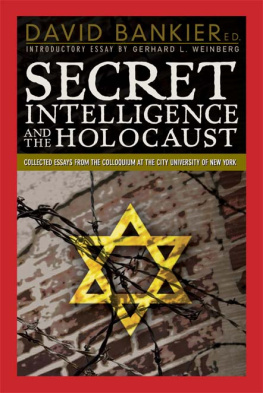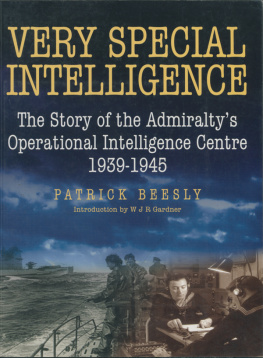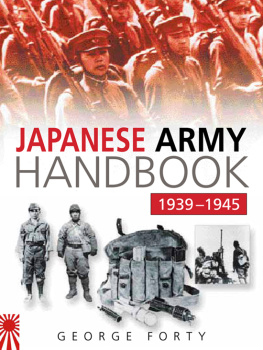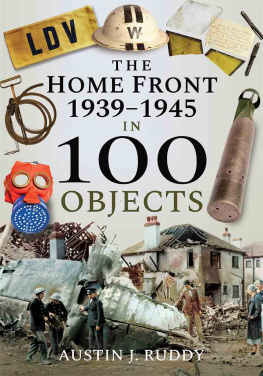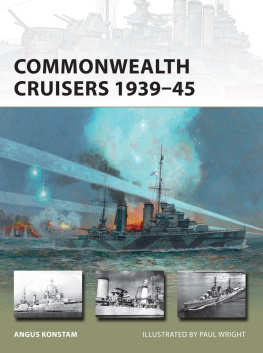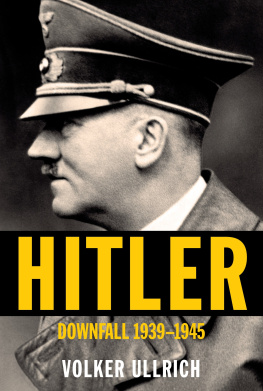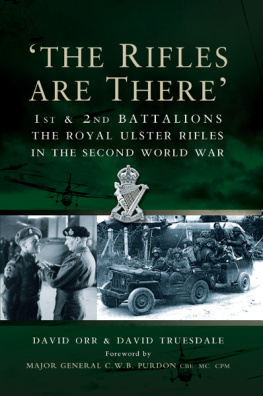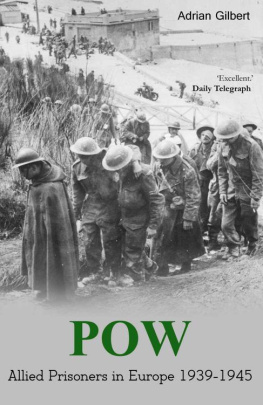EAVESDROPPING
ON HELL
EAVESDROPPING
ON HELL
Historical Guide to Western Communications
Intelligence and the Holocaust, 19391945
R OBERT J. H ANYOK
DOVER PUBLICATIONS, INC.
Mineola, New York
Photographs courtesy of United States Holocaust Memorial Museum,
National Archives, and National Security Agency.
Excerpt from Leaving Sodom reprinted by permission of
Ann Lauinger and the University of Utah Press.
Copyright
Preface to the Dover Edition copyright 2012 by Robert J. Hanyok
All rights reserved.
Bibliographical Note
This Dover edition, first published in 2012, is an unabridged republication of the second edition of the work, first published by the Center for Cryptologic History, National Security Agency, Fort Meade, Maryland, in 2005. A new Preface to the Dover Edition, written by the author, has been specially prepared for this volume.
Library of Congress Cataloging-in-Publication Data
Hanyok, Robert J.
Eavesdropping on Hell: historical guide to western communications
intelligence and the Holocaust, 1939-1945 / Robert J. Hanyok. 2nd ed.
p. cm.
Originally published: Fort Meade, Md.: Center for Cryptologic History,
National Security Agency, 2005. With new pref.
ISBN-13: 978-0-486-48127-2
ISBN-10: 0-486-48127-1 1.
1. World War, 1939-1945Cryptography. 2. EavesdroppingUnited States.
3. EavesdroppingGreat Britain. 4. Holocaust, Jewish (19391945).
5. Confidential communicationsGermany. 6. World War, 19391945
Military intelligenceUnited States. 7. World War, 19391945Military
intelligenceGreat Britain. 8. World War, 19391945Electronic
intelligence. I. Title.
D810.C88H36 2011
Manufactured in the United States by Courier Corporation
48127101
www.doverpublications.com
Contents
This book is dedicated to those cursed with the memory of this
horror and to those who assumed the burden of its remembrance.
In the six years since the U.S. Department of Defense published Eavesdropping on Hell, there has been substantial changes in the way historians and other scholars of the Holocaust have incorporated into their narratives information from the declassified Allied communications intelligence, more popularly known as Ultra.
Prior to the publication of Eavesdropping in 2005, this was not the case. The United States and United Kingdoms release of millions of pages of declassified cryptologic records in the preceding two decades had surprisingly little impact on Holocaust scholarship. The handful of articles and books that contained any reference to the available COMINT records concentrated on the most dramatic examples from one sourcethe decrypts of intercepted German Police messages sent from the western Soviet Union that described the killings and other atrocities committed against the inhabitants of the regionoverwhelmingly Jews.
What was crucially missing from these writings was an appreciation of the context of these decrypts. What the scholars failed to answer was how the decrypts were obtained, processed, analyzed, and reported to Allied authorities. More significantly, the authors of these works tended to minimize or ignore the fact that only a small portion of the German Police decrypts contained intelligence about the purposeful destruction of Russian Jewry, and even that information referred to only a small portion of the true number of the total killed by the police, the SS, Einsatzgruppen, and Wehrmacht.
These early oversights about the records were exploited cynically by the pseudo-researchers of the Holocaust-denial lobby who expounded their insidious claims about the size and scope of the Holocaust based on the paucity of intelligence from the supposedly complete cryptologic records. They were able to reach an audience because the context and provenance of the records were not explained or were misunderstood. Eavesdroppin g corrected this situation by pointing out that the information from the Allied COMINT agencies had to be combined with the other records of the Holocaust to arrive at the reliable picture of what happened. Eavesdropping also pointed out that Allied COMINT attached the highest priority to discovering Axis military actions and that relatively limited resources were available to collect, process, and report information on the Holocausthence the limited number of records.
In other ways, Eavesdropping on Hell demonstrated how diverse cryptologic records about the Holocaust could be. These papers ran the gamut of possible sources, even to the point of the occasional surprise. For example, from their various posts in Europe and the Middle East, Japanese diplomats reported on the plight of national Jewish populations. These messages had been available in the U.S. National Archives as early as 1978, yet no Holocaust scholar made use of them. Understandably, scholars of the European Holocaust might be pardoned for overlooking Japanese sources, but much the same oversight occurred after 1996 when the U.S. released the declassified translations of the messages of all diplomatic missions. A collection that included reports of the genocide against the Jews from the diplomats of Portugal, Spain, Turkey, Switzerland, and Latin American countries remained untapped for almost a decade. Moreover, these reports, being only a small portion of the total diplomatic traffic, pointed to greater stores of information within the archives of these countries.
As much as revealing the what contained in the declassified COMINT records was important, Eavesdropping was, I believe, more noteworthy for answering their how, when, and where. The explanation of the COMINT process, the locations of the records in the archives of the Unites States and United Kingdom (the latter known popularly as the Public Records Office or PRO) and how the collections were assembled, proved to be more useful to both Holocaust scholars and the interested public. Today, the literature of the Holocaust continues to swell, and Eavesdropping remains an aid, as well as a historiographical source for all future writings.
The new edition of Eavesdropping on Hell by Dover Publications marks a new beginning for the book. Originally, the books availability in hard copy was circumscribed by there being only one sourcethe National Security Agency. This new edition promises to reach a much wider readership than previously known; the expectation for expanded knowledge of the Holocaust stands ready to cross new boundaries.
R OBERT J. H ANYOK
Laurel, MD
December 2010
There is no river but memory.
Raise up, raise up a pillar of our tears.
L EAVING S ODOM BY A NN L AUINGER
Surely, the grimmest part of the Second World War was the Holocaust (or Shoah). This entailed the systematic and wholesale destruction of European Jewry and other groups such as Slavs, Poles, and Romany (Gypsies), among others, which the Nazis had deemed inferior and then slated for destruction because of race, blood, or disability. In fact, one of the major war aims of Nazi Germany was the extermination of global Jewry. During the war years, Europes landscape was scarred by the presence of concentration, labor, and death camps. Einsatzgruppen (operations groups), and numerous German Police units roamed the western Soviet Union in the wake of the Wehrmacht, slaughtering Jews, Slavs, and Bolsheviks. Collaborationist regimes of nations allied to or conquered by the Axis powers cooperated with the Nazi security forces in extinguishing national or resident refugee Jewish populations. The darkness that overwhelmed Nazi-occupied Europe and threatened other nations in the world was only slightly lessened by individual acts of courageous opposition and the example of the nation of Denmark, which smuggled virtually its entire Jewish population to safety in Sweden. By the end of the war, it has been estimated that Europes Jewish population had been reduced to somewhere between a third to a quarter of its 1939 level.


